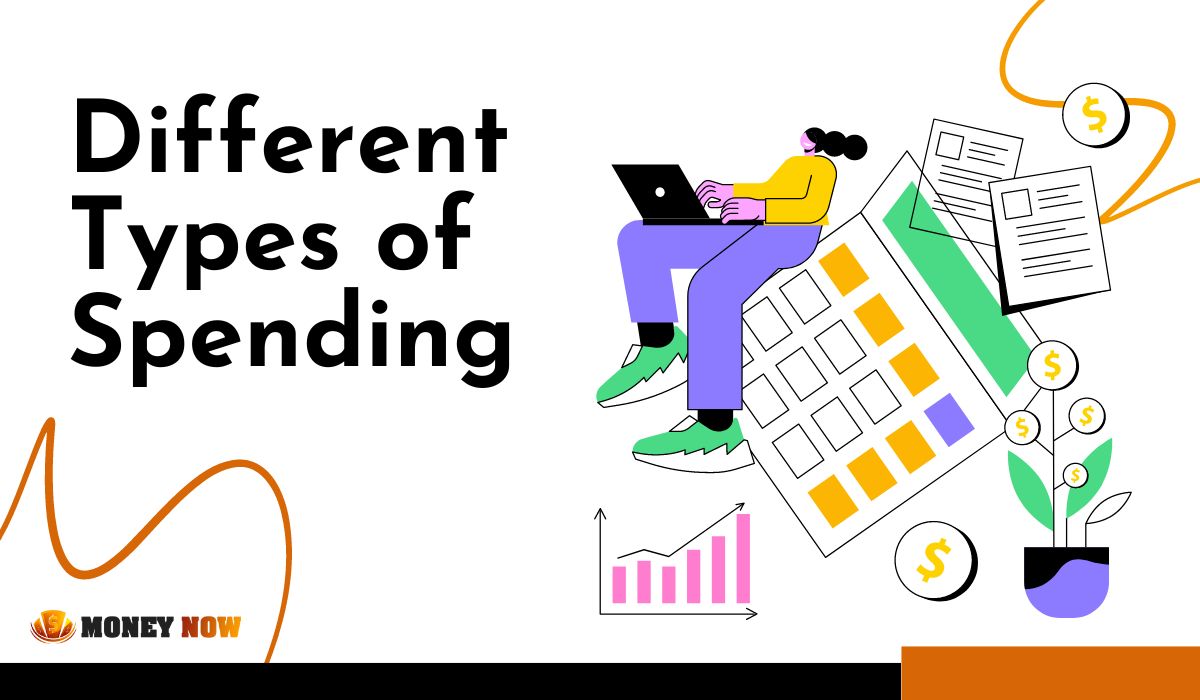
Understanding the different types of spending is crucial for wisely navigating your finances, whether managing a personal budget, running a business, or examining government policies. It involves more than just tracking where your money goes; it's about making informed choices that reflect your needs, goals, and values. The main categories of spending are:
Personal spending
Business spending
Government spending
By categorizing your expenditures, investments, and savings within these broader areas, you can better allocate your resources to shape your life, business, or policy-making according to your priorities. Let's delve into these spending categories to understand their impact on your financial health and future prospects.
Navigating personal finance involves striking a balance between immediate needs and future aspirations. Consumption spending covers daily necessities and pleasures but requires careful management to prevent encroaching on savings or investment funds. It's crucial to prioritize needs over wants and adhere to a budget to maintain financial health.
Investment spending is key for long-term wealth creation, focusing on assets like stocks, real estate, or personal education that may not yield instant gratification but promise growth over time. Diversifying investments and staying informed can maximize potential returns.
Savings act as both a safety net for unexpected expenses and a foundation for achieving long-term goals, such as buying a home or retirement planning. Regularly setting aside money, prioritizing savings goals, and employing automated saving strategies can build a secure financial future.
Balancing these aspects of personal spending requires ongoing adjustment and a keen understanding of one’s financial situation
Business spending is a critical component in driving growth, innovation, and competitive advantage. Operational spending covers the day-to-day expenses that allow a business to function smoothly, including salaries, rent, utilities, and inventory costs. This type of spending must be optimized to ensure that the business remains profitable and sustainable in the long term.
Capital expenditures (CapEx) represent investments in physical assets such as machinery, technology, or property. These investments are crucial for scaling operations, entering new markets, and enhancing production capabilities. Although CapEx requires significant upfront costs, the long-term benefits include increased operational efficiency and revenue growth.
Research and Development (R&D) spending is another vital area, fueling innovation and keeping the business at the forefront of its industry. R&D can lead to the development of new products, services, and technologies, offering a competitive edge and opening new revenue streams. Despite the inherent risks and uncertainties associated with R&D investments, they are essential for long-term success and adaptability in rapidly changing markets.
On the governmental side, spending reflects the priorities and needs of a society, playing a key role in economic and social management. Consumptive spending is directed towards immediate public services such as education, healthcare, and public safety, ensuring the welfare and stability of the population.
Investment spending focuses on the infrastructure and long-term projects like roads, schools, and public facilities. These investments are fundamental for a country's economic development and competitiveness, enhancing the quality of life for its citizens and facilitating business operations.
Transfer payments include welfare benefits, unemployment aid, and subsidies, which are crucial for social equity and stability. They help to redistribute income, support the economically vulnerable segments of society, and stimulate economic activity by increasing overall spending power.
Both individuals and entities face the challenge of balancing discretionary and non-discretionary spending. Discretionary spending offers room for adjustment and prioritization based on current goals and financial health. In contrast, non-discretionary spending is obligatory, often fixed, and requires careful budgeting to ensure that essential needs are met without compromising financial stability.
Consumption spending is for immediate needs and pleasures, while investment spending focuses on purchasing assets that may increase in value over time for wealth creation.
Businesses can balance these expenditures by optimizing day-to-day operational costs while strategically investing in assets that drive long-term growth and efficiency.
Savings act as a safety net for unexpected expenses and provide the financial foundation needed to achieve long-term aspirations, such as buying a home or retirement.
Government spending supports public services, invests in infrastructure, and redistributes resources for social welfare, playing a crucial role in economic and social stability.
Individuals can improve financial health by prioritizing essential needs, setting clear financial goals, and budgeting carefully to allow for discretionary spending without compromising savings or investments.
In essence, navigating the realms of different types of spending is fundamental to forging a secure financial future. Effective management of consumption, investment, and savings at the personal level; strategic operational, capital, and R&D expenditures in business; and thoughtful allocation of consumptive, investment, and transfer payments by governments, are all pivotal. Achieving a balance between discretionary and non-discretionary spending across these areas is crucial for fostering financial health, driving growth, and ensuring stability, thereby underlining the importance of informed financial decision-making in shaping our economic landscape.
Learn how to purchase savings bonds as a thoughtful and enduring present for your loved ones. Dive into our comprehensive guide now and make their future brighter with the gift of savings bonds!
